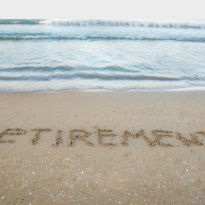Laith Khalaf, head of investment analysis at AJ Bell, comments on the OBR’s economic outlook for the country and how much the Chancellor is betting on a continued positive economic outcome.
There was undoubtedly some good news for workers in the Autumn Statement in the form of a meaningful National Insurance cut, but the economic and fiscal forecasts still make for pretty grim reading.
In particular, although the Autumn Statement has lessened the tax burden a bit, it’s still expected to rise to a post-war high in five years’ time, at 37.7% of GDP. That’s on top of the bad news delivered by the Bank of England earlier this month that over half the pain of rising interest rates is still in the post.
Fiscal drag is a powerful force, especially when tax thresholds are frozen in the face of an inflationary storm. As a result of this policy, four million more people will be paying income tax by 2029 and three million more will be paying higher rate tax. And though the government is happily cutting the rate of National Insurance for workers from January, we should also bear in mind that the threshold at which it starts being paid is now frozen until 2028, and so rising wages will push a greater proportion of people’s income into scope.
Economic growth is also forecast to be thin on the ground going forward, with growth of just 0.7% next year, rising to 1.4% the year after. The budget watchdog is actually pretty upbeat compared to the Bank of England, which sees growth coming in at 0.1% next year and 0.2% the year after. It remains to be seen which set of predictions prove to be correct, if either.
In this set of forecasts the OBR has integrated the significant revisions to previous economic growth made by the ONS a few months back. It does nothing to liberate economics from its reputation as the dismal science when its most respected contributors can’t get the past right, let alone the future.
Politics aside, the backdrop to this fiscal hole is two massive systemic shocks in the form of the pandemic and the energy crisis. The cost of these shocks in terms of economic growth and extraordinary government expenses like the furlough scheme and energy support measures shouldn’t be underestimated. Given what has happened so far in the 2020s, it perhaps shouldn’t come as too much of a surprise that living standards are forecast to be 3.5% lower in 2025 than their pre-pandemic levels.”
Looking at the fiscal forecasts, Jeremy Hunt is basically betting that economic forecasts don’t deteriorate between now and the March Budget, because if they do, he may have to deliver some unpleasant news to taxpayers just ahead of an election.
His margin of error for meeting his own very loose fiscal rule on the national debt sits at just £13 billion. Sounds a lot? Well yes, but in fiscal terms it’s a hair’s breadth. The average held by chancellors since 2010 is £29.7 billion. And the £13 billion includes £6.2 billion of revenue from raising fuel duty in line with inflation, which no chancellor has dared to do since 2011.
Unlike with this Autumn Statement, Jeremy Hunt can’t rely on forecasts moving forward another year between now and the March budget either. The OBR gives the chancellor a 56% chance of getting the national debt falling in five years’ time, so the gamble is just about a good one for habitual coin flippers.
However an interest rate surprise, extraneous shocks, or economic underperformance in the next few months could leave the chancellor on a sticky wicket come the March budget.































